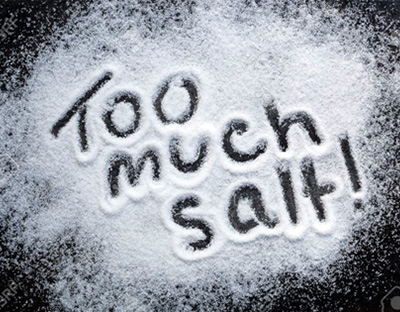
5. High sodium intake in type 2 diabetes

High sodium intake may increase urinary protein level without kidney injury in type 2 diabetes
Inpatients with type 2 diabetes who consume larger quantities of sodium may have
higher urinary protein levels without other markers of acute kidney injury, according
to findings published in the Journal of Diabetes and its Complications.
“There have been inconsistent findings regarding the association between sodium intake and kidney function in type 2 diabetes,” Xianghai Zhou, MD, PhD, of the Department of endocrinology and metabolism at Peking University People’s Hospital in Beijing, and c olleagues wrote. “Some studies have shown that a high-sodium intake is positively correlated with increased urinary protein and decreased serum creatinine clearance; in contrast, some studies have shown a positive correlation between low sodium intake and increased urinary protein level”. Between May and September 2018, Zhou and colleagues evaluated 24-hour urinary sodium, 24-hour urinary protein, creatinine, albumin to creatinine ratio and renal tubular injury markers, such as retinol-binding protein, beta 2-microglobulin and N-acetyl-beta-D-glucosaminidase, from urine samples of 269 hospitalized adults with type 2 diabetes (mean age, 62 years; 38.7% women). The researchers described 24-hour urinary sodium as “the gold standard for estimating sodium intake.”
A threshold of 0.08 g per day for 24-hour urinary protein level was set and compared participants on either side of this mark. Participants with 24-hour urinary protein level below 0.08 g per day averaged 143.7 mmol per day for 24-hour urinary sodium level compared with 167.4 mmol per day among those with 24-hour urinary protein level of at least 0.08 g per day (P < .05).
The researchers noted that the odds of more than 0.08 g per day for 24-hour urinary protein level were 2.76 times greater for those with a 24-hour urinary sodium level of 205.4 mmol per day or more vs. those with 24-hour urinary sodium level of 115.4 mmol per day or less (OR = 2.76; 95% CI, 1.25-6.05). In addition, the odds of having a 24-hour urinary protein level of more than 0.08 g per day increased 6% when a participant experienced a rise in 24-hour urinary sodium of 10 mmol per day (OR = 1.06; 95% CI, 1.01-1.11).
There was little effect on 24-hour urinary protein level from renal tubular injury markers, except N-acetyl-beta-D-glucosaminidase (OR = 1.09; 95% CI, 1.02-1.16), according to the researchers. This study found that 24-hour urinary sodium and renal tubular markers levels were positively associated with urinary protein levels, whereas no association was found between 24-hour urinary protein and renal tubular injury markers, suggesting that a high-sodium diet was a risk factor for proteinuria while a high-sodium diet-induced proteinuria was not related to renal tubular injury,” the researchers reported.
For enquiries info@jothydev.net.
Please visit: jothydev.net | research.jothydev.com | diabscreenkerala.net | jothydev.com/newsletter
